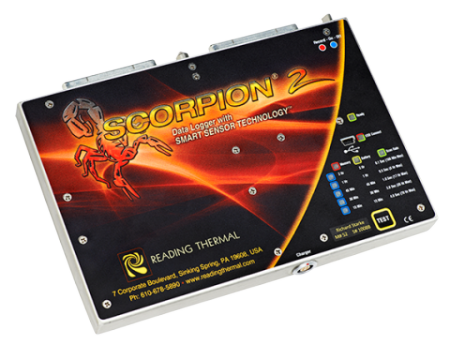When it comes to baking, achieving that perfect loaf of bread or batch of cookies isn’t just about mixing the right ingredients. The baking process itself plays a pivotal role in determining not only the taste and texture of your products but also their shelf life. One often overlooked aspect is accurate temperature and humidity monitoring for commercial bakery ovens in Vietnam. By keeping a close eye on these factors – and using technology from Reading Thermal – bakers can significantly influence the longevity and quality of their baked goods.
The Science Behind Shelf Life in Baked Goods
Shelf life refers to the duration a product remains safe to eat and retains its desired sensory qualities. For baked items, factors like moisture content, microbial activity and chemical changes can affect shelf life. Properly monitoring and controlling oven conditions can mitigate some of these issues, leading to products that stay fresher longer.
Temperature’s Role in Baking
Temperature is a critical element in baking. It affects the rate of chemical reactions, such as yeast fermentation and Maillard browning, which contribute to flavor and color. However, inconsistent or incorrect temperatures can lead to underbaking or overbaking.
Underbaked products may retain excessive moisture, creating an environment conducive to mold growth and reducing shelf life. Overbaked items, conversely, can become too dry, leading to staling and a shorter period of optimal freshness. By accurately monitoring oven temperature, bakers can ensure products are baked to the ideal moisture content, enhancing both quality and longevity.
Humidity’s Impact on Baked Goods
Humidity within the oven influences the moisture content of baked goods. High humidity can slow down moisture loss, resulting in a softer crust and prolonged freshness. On the other hand, low humidity can lead to rapid moisture evaporation, yielding a harder crust and potentially drier interior.
For instance, artisan breads often benefit from higher humidity levels during the initial baking phase to develop a desirable crust and crumb structure. Monitoring and adjusting oven humidity allows bakers to achieve the desired product characteristics and extend shelf life.
The Importance of Real-Time Monitoring
To effectively control temperature and humidity, real time monitoring is essential. This is where tools like Reading Thermal’s SCORPION® 2 Profiling System come into play. This system enables bakers to measure and analyze key baking parameters, including temperature and humidity, in real time. By using the SCORPION® 2, bakers can gain a precise understanding of their oven’s environment, allowing for adjustments that lead to consistent product quality and extended shelf life.
Enhancing Product Consistency
Consider a scenario where a bakery faces issues with inconsistent bread quality and reduced shelf life. By implementing the SCORPION® 2 Profiling System, they could monitor the oven’s temperature and humidity profiles accurately. The data can reveal fluctuations in humidity levels during peak baking times. With this insight, the bakery can adjust their oven settings to maintain optimal humidity, resulting in more consistent bread quality and an extended shelf life.
Take the Next Step
In the art and science of baking, temperature and humidity monitoring for commercial bakery ovens in Vietnam isn’t just about achieving the perfect bake; it’s also about ensuring that products remain fresh and safe for as long as possible.
By utilizing advanced monitoring systems like Reading Thermal’s SCORPION® 2, bakeries can gain precise control over their baking environment. This leads to consistent product quality, enhanced customer satisfaction and a notable extension of shelf life. In a competitive market, such attention to detail can make all the difference. Contact us online or call (01) 610-678-5890 to learn more.

